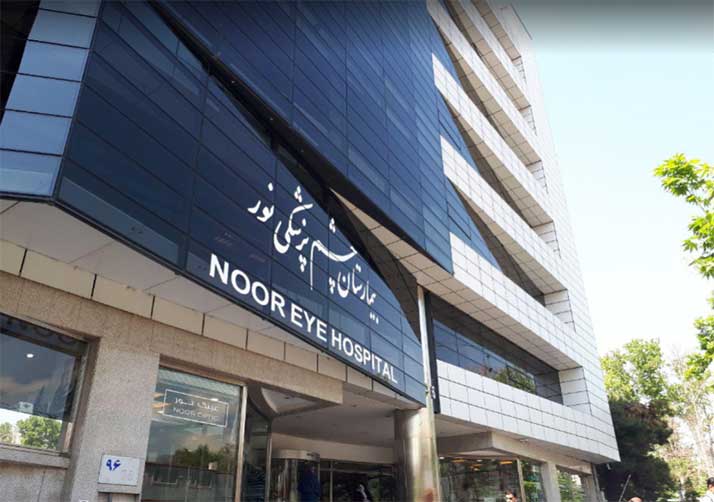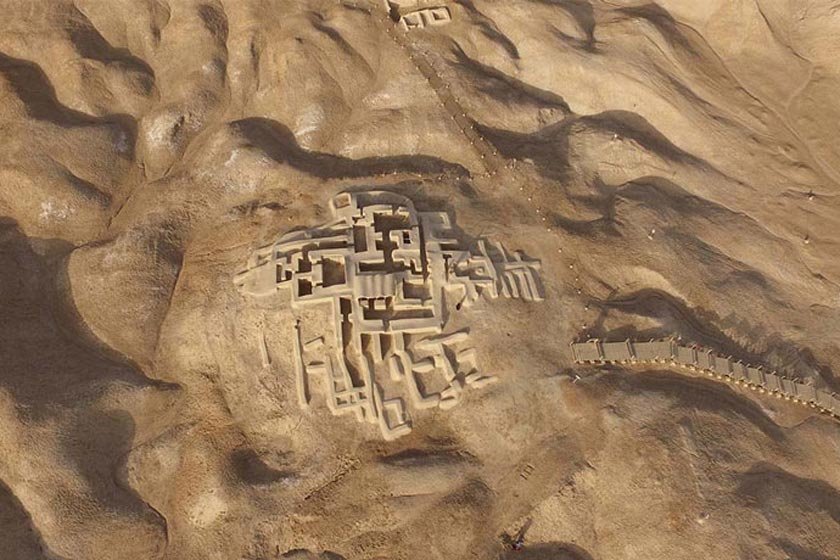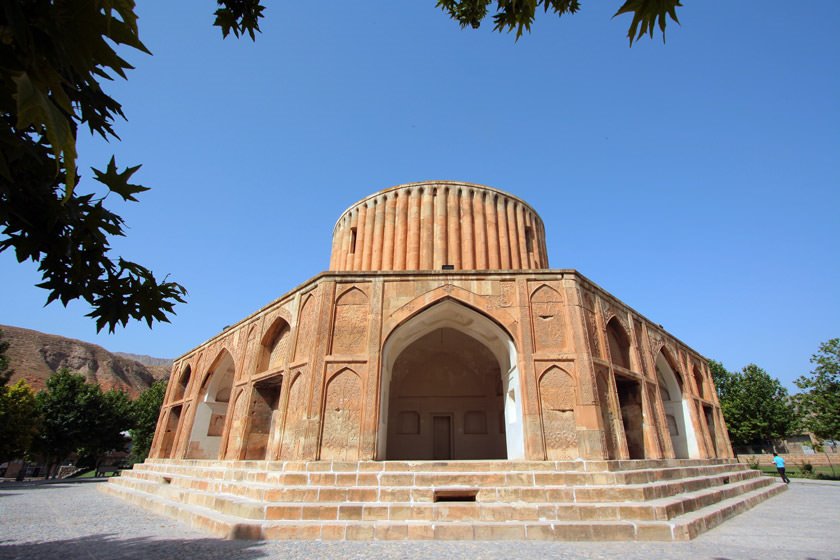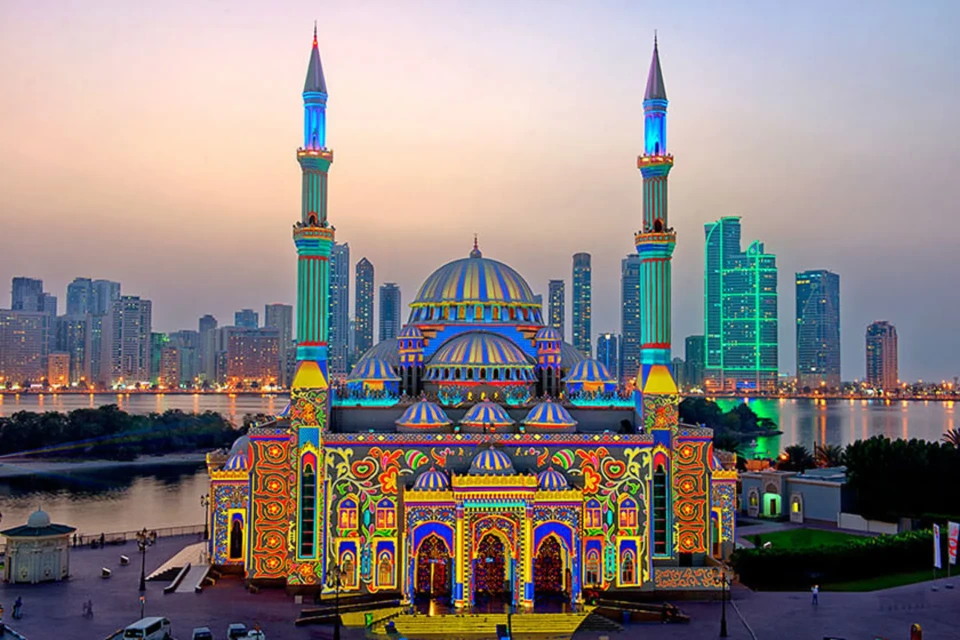Noor hospital | Iran’s Noor Ophthalmology Hospital
The history of ophthalmology in Iran dates back centuries, evident from the study of ancient Iranian medical texts, which show that Iranian physicians were among the earliest in history to address eye disorders in their patients. However, modern ophthalmology has been prevalent in Iran for about a hundred years, with the provision of services in this field largely dependent on advanced equipment in specialized hospitals.
In this context, the Noor Ophthalmology Complex commenced its activities in 1372 (1993 Gregorian calendar) by launching the Noor Motahari Clinic as the first specialized private ophthalmology clinic. This clinic marked the initial phase of Noor’s activities, and in 1392 (2013 Gregorian calendar), it expanded and continued its services with the utilization of new buildings and advanced facilities, still providing services today.
The establishment of the Noor Super Specialized Eye Hospital at the beginning of Esfandiar Boulevard in 1386 (2007 Gregorian calendar) was a continuation of the initiative that began in 1372 and continued with the development of the Excimer Clinic on Babak Bahrami Street in 1379 (2000 Gregorian calendar). Noor Hospital is the country’s first specialized private eye hospital and, with a referral and super-specialized consultation system, proficient ophthalmologists with up-to-date knowledge, state-of-the-art diagnostic and treatment equipment, and compassionate and trained staff, it has provided dignified services to fellow citizens in a beautiful and serene environment, always shining and leading in all scientific, practical, and technological fields, proving its excellence in the country and the region.
The establishment of Noor Hospital led to the first-time provision of the entire spectrum of ophthalmic services, from the most basic to the most advanced surgeries in the world of ophthalmology, under one roof; in other words, patients do not need to leave the complex to complete their diagnostic and treatment process, receiving all services in one place.
To further ensure the welfare and comfort of visitors, the buildings of Noor’s specialized clinics were transferred to a new center on Esfandiar Street in 1392, near the main Noor Hospital building. This relocation facilitated faster access to quality eye care services for compatriots. In these clinics, the most advanced diagnostic and treatment facilities have been utilized, and specialized units such as the Lens Clinic, Low Vision Clinic, and super-specialized clinics including Keratoconus Clinic and other fields of ophthalmology have been established so that Noor ophthalmologists can provide comprehensive diagnostic and treatment services to their patients.
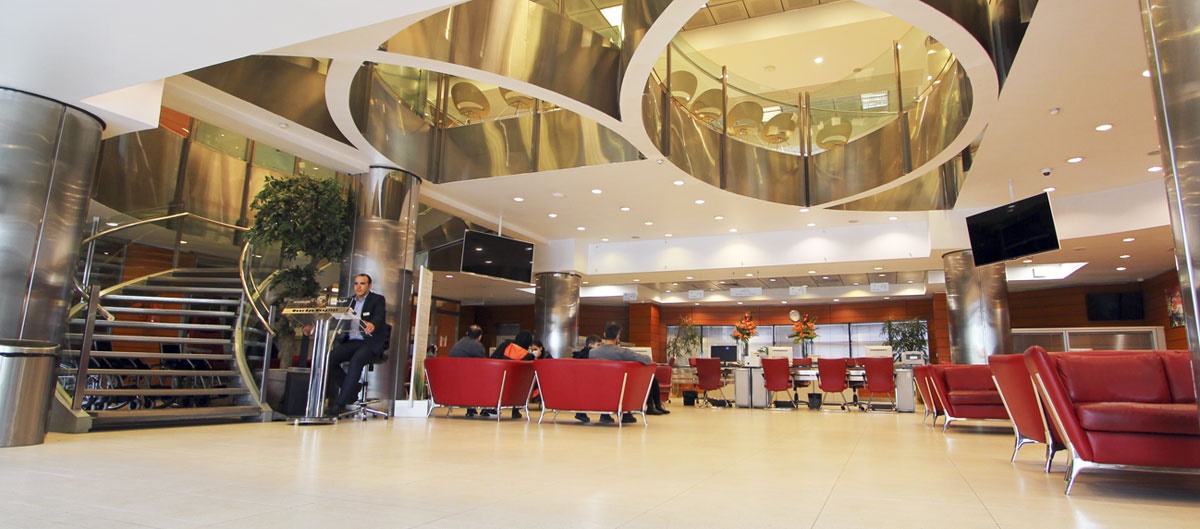
The increasing number of referrals from neighboring provinces such as Alborz and Qazvin and the necessity of facilitating access to medical services by various segments of the population led to the launch of the Noor Alborz Super Specialized Eye Hospital in 1392. This medical center, with the same quality and standards as Noor Hospital and its affiliated clinics in Tehran, covers all ophthalmic services and, like other Noor ophthalmology centers, has cooperation agreements with basic, complementary, and organizational insurances.
Continuing on this path, the establishment of the Noor Fardis Super Specialized Eye Clinic in 1399 was aimed at providing quality services and distributing services nationwide. This clinic is located in Fardis, Alborz Province, and serves patients and dear compatriots.
The Noor Group, with the aim of serving the dear people who have more difficult access to appropriate and dignified services, established the Noor Super Specialized Eye Clinic in Rey in 1399. Like other Noor centers, this clinic is equipped with the newest and most up-to-date equipment and provides super-specialized services with the best quality to respected patients.
In 1399, the international branch of the Noor Group was inaugurated in Muscat, the capital of Oman, to provide ophthalmic services using the expertise of Iranian ophthalmologists and medical staff to patients in Oman and neighboring countries. The Noor Iranian Clinic in Muscat is currently operational and has been able to ensure patient satisfaction very well, evidenced by the high number of patient visits to this center.
Why Noor Eye Hospital
Noor Group commenced its activities in 1372 (1993 Gregorian calendar) with the establishment of the first specialized ophthalmology clinic in Iran. The launch of the Noor Super Specialized Eye Hospital in 1386 (2007 Gregorian calendar) was the second step towards providing access for patients to modern ophthalmic services, bringing pride to Iran and Iranians.
Currently, with over three decades of continuous operation, “Noor” is considered the first private ophthalmology center in Iran, offering the most diverse and up-to-date diagnostic and treatment services in ophthalmology to compatriots and patients from abroad. The complex, by providing various treatments and performing the most complex eye surgeries, has always been admired by the Iranian and global ophthalmology community, maintaining its superiority through continuous efforts in scientific, practical, and technological fields, both nationally and regionally.
Noor Eye Hospital has been a pioneer in employing many therapeutic techniques such as refractive surgeries (PRK, FemtoLASIK, and FemtoSMILE), cataract surgeries (phacoemulsification), as well as corneal, retinal, and other surgeries in Iran. The quality of services provided by this institution can be compared to the most reputable medical centers worldwide.
In this hospital, all necessary facilities and provisions for successful and quality treatment have been carefully considered in advance. Noor ophthalmologists are well-known individuals in terms of scientific and clinical standing. The compassionate and caring nurses provide hospital care at the highest level, and the executive staff have undergone special training courses to ensure the best and highest quality services are provided to visitors.
Moreover, Noor Hospital, for the first time, offers all ophthalmic services, from basic services to the most advanced modern surgeries, in one facility, eliminating the need for patients to leave the complex to complete their diagnostic and treatment processes.
Some of Noor’s achievements include:
Performing the first refractive surgery using Excimer and Femtosecond lasers in Iran.
Conducting the first laser surgeries to correct corneal irregularities.
Performing the highest number of refractive surgeries in Iran and the Middle East.
Implanting intra-corneal rings for correction of myopia and keratoconus for the first time in the country.
Conducting the first surgery for vision correction using guided wavefront technology.
Implanting intraocular lenses for presbyopia correction.
Performing the first phacoemulsification cataract surgery.
Conducting the first cataract surgery using laser.
Implementing modern corneal graft techniques.
For the convenience and comfort of visitors, by launching Clinic No. 82 on Esfandiar Street, all clinic and paraclinical services, as well as pre-surgical examinations, have been relocated to a new building, minimizing pre-surgery traffic.
The establishment of Noor Alborz Super Specialized Eye Hospital and Noor Fardis and Rey Super Specialized Clinics were further steps in providing services to the noble Iranian people. The opening of the Iranian Super Specialized Clinic in Muscat (the capital of Oman) marks the first international branch of the Noor complex.
Access Guide to Noor Eye Hospital
Here is Tehran, a vibrant city always bustling with the vastness of the Iranian people. Noor Eye Hospital and Super Specialized Eye Clinics shine like a brilliant gem on the forehead of the city, and its name is synonymous with tranquility, assurance, and precision.
This medical center is located in northern Tehran, in an excellent commercial, administrative, and residential area with easy access to highways and major city streets. Therefore, from any part of the capital, you can comfortably reach Noor Hospital and receive the most diverse ophthalmic treatments.
For further peace of mind and ease of access to Noor Eye Hospital, we remind you of some important points.
Airport:
Mehrabad International Airport
All domestic flights and most VIP and diplomatic flights are operated through Mehrabad International Airport, located in western Tehran. The distance from the airport to Noor Eye Hospital is about 18 kilometers, and the minimum travel time required is 20 minutes, which may vary depending on city traffic.
Mehrabad International Airport is connected to Tehran’s metro network. Additionally, regular and modern taxis are available for passenger transportation from the airport to various parts of the city.
Intercity Bus Terminals:
Beyhaghi Terminal (Argentina Square): This terminal and its modern buses are usually used for travel to tourist cities in Iran. The terminal is approximately 20 minutes away from Noor Hospital.
West Terminal: If you are traveling from cities in the west and northwest of the country to Tehran, this terminal is the best option, with a distance of about 40 minutes to Noor Hospital.
East Terminal: If your journey is from cities in the east and northeast of the country, choose this terminal. The East Terminal is about 45 minutes away from Noor Hospital.
South Terminal: Buses from central, southern, southwest, and southeast regions of the country to Tehran arrive at this terminal. The South Terminal is about 55 minutes away from Noor Hospital.
Streets and Highways:
Noor Eye Hospital is located near major streets and highways in the city.
Highways: To access Noor Hospital from various parts of Tehran, you can use highways such as Chamran, Modares, Yadegar Imam, Niayesh, and Hakani. The average travel time to the hospital via these highways is about 15 minutes.
Streets: Two important streets, Valiasr (the longest street in Iran) in the west and Nelson Mandela (Jordan) Street in the east, are located near the hospital, and famous landmarks such as Park-e Mellat and Vanak Square are within short walking distance. These streets have quality sidewalks for pedestrians. The average travel time from these streets to Noor Hospital is about 6 minutes.
Hotels:
Noor Hospital is located in a luxurious commercial, administrative, and tourist area. The most famous and highest quality hotels in Iran are located in this area. Some of these hotels include:
Esteghlal Hotel: 5-star hotel / Distance to Noor Eye Hospital: 6 minutes
Azadi Hotel: 5-star hotel / Distance to Noor Eye Hospital: 10 minutes
Evin Hotel: 4-star hotel / Distance to Noor Eye Hospital: 12 minutes
Pars Hotel: 3-star hotel / Distance to Noor Eye Hospital: 8 minutes
Vazra Hotel: 3-star apartment hotel / Distance to Noor Eye Hospital: 10 minutes
Tehran Hotel: 4-star hotel / Distance to Noor Eye Hospital: 15 minutes
Espinas Palace Hotel: 4-star hotel / Distance to Noor Eye Hospital: 18 minutes
Note: Times may vary depending on the day of the week and traffic conditions.
Public Transportation: Access to Noor Eye Hospital via public transportation is easily possible.
Taxi:
You can easily reach Noor Hospital from anywhere in the city by taxi. Simply dial 133 for taxi service.
Shared Taxi: The taxi stand for shared taxis (shared cabs) is located on the north side of Vanak Square, at the beginning of Valiasr Street. You should get off the taxi at the beginning of Esfandiar Street. Noor Hospital is located on the right (east) side.
BRT Bus:
Bus Line 1 of Tehran’s BRT buses passes in front of Noor Hospital. You should get off the bus at the Niayesh station. Noor Hospital is located at the beginning of Esfandiar Street.
Metro:
The nearest metro station to this hospital is Mirdamad Station. After exiting the metro station, take a taxi or BRT bus to reach Noor Hospital.
Achievements:
Performing the first refractive surgery to correct refractive errors using Excimer and LASIK lasers in Iran.
Performing the first laser surgeries to correct corneal curvature.
Performing the highest number of refractive error correction surgeries in Iran and the Middle East.
Implanting intra-corneal rings to correct nearsightedness and keratoconus (corneal bulging) for the first time in the country.
Performing the first cataract surgery using the Phaco method and the first cataract surgery using laser.
Establishing the first diabetic clinic to monitor eye problems in diabetic patients in the country.
Performing the first CXL (Cross-linking) surgery in Iran to control keratoconus.
Launching various advanced corneal graft techniques (Femtosecond-assisted PK, DALK, DSAEK, DMEK).
Performing the first artificial iris implantation and eye color change surgeries in Iran.
Establishing the most comprehensive and well-equipped Low Vision Clinic in the country.
Implementing various modern intraocular lens types (Ultra-thin IOLs, Multifocal Restor, Artiflex) for the first time in Iran.
Establishing the first Keratoconus (corneal bulging) super-specialized clinic and the first super-specialized clinic for superficial corneal diseases.
Establishing the first private ophthalmic research center in the country, licensed by the Ministry of Health, Treatment, and Medical Education.
Launching the only PROSE Clinic in collaboration with the Boston Foundation for Sight in the Middle East.
Performing the first artificial corneal graft in Iran.
Performing the Femto-smile surgical technique to correct refractive errors in myopia patients.
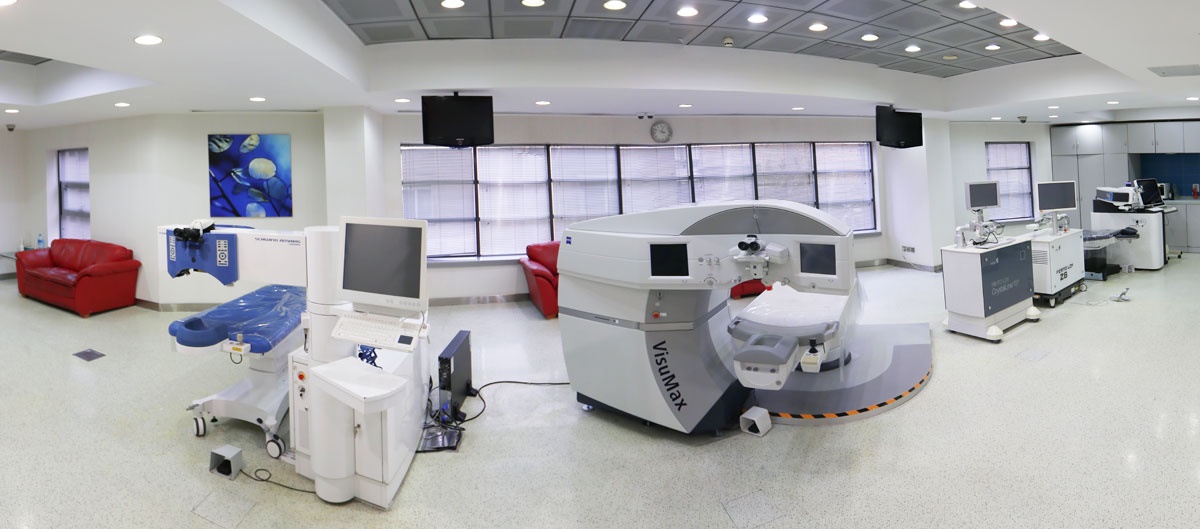
Diagnostic Equipment
Noor Super Specialized Eye Hospital, relying on years of diagnostic and therapeutic experience, is now equipped with the most advanced and efficient diagnostic, therapeutic, and paraclinical equipment, providing the highest quality ophthalmic services to both domestic and international patients.
In this section, you will become familiar with some of the diagnostic services, including Paraclinical Equipment, Eye Angiography, and the Pathobiology Laboratory at Noor Eye Hospital.
Paraclinical Equipment:
The Paraclinical section of Noor Super Specialized Eye Hospital has been serving a large number of visitors daily with the most advanced diagnostic equipment in accordance with the latest standards of ophthalmic centers worldwide since its establishment. The equipment includes:
Ultrasound:
This device is used for determining the power of intraocular lenses in a contact manner. The method is simple; firstly, ultrasound waves are sent into the eye tissue, and upon their return, virtual images and mathematical data are obtained, from which the power of intraocular lenses is calculated.
IOLMaster:
This device is used for determining the power of intraocular lenses in a non-contact manner. This is done with high accuracy and speed using laser light radiation, providing parameters such as eye length, corneal curvature, and anterior chamber depth. The results of these calculations, after applying highly complex mathematical formulas, are recorded and provided to the ophthalmologist. This method is used for selecting monofocal, multifocal, toric lenses, accommodating lenses, and also for astigmatism correction.
Topography:
The topography device is used to examine the surface elevations and depressions of the cornea and corneal curvature, providing both qualitative and quantitative evaluation of the corneal surface to the ophthalmologist. The specific topography imaging system evaluates about 8,000 to 10,000 points and produces graphical charts by comparing the created images with the target sample. These charts are used for diagnosing keratoconus, performing keratoplasty surgeries, evaluating post-corneal procedures, and examining candidates for refractive surgeries.
Pentacam:
In this system, which employs a special imaging technique, more detailed and accurate information than topography is obtained. This diagnostic device measures and examines the anterior segment, evaluating over 25,000 points from the surface to the depth of the cornea, providing information such as corneal thickness, anterior chamber volume, and intraocular pressure. Additionally, it generates precise images of the iris and corneal density. The Pentacam device has more capabilities compared to topography and is used for precise cataract localization, fitting contact lenses especially hard lenses, evaluating the effectiveness of soft contact lenses, and predicting keratoconus, serving as a diagnostic tool in refractive surgery candidates.
Echography:
This device is used to measure and examine the lens and to investigate the retina, vitreous, ocular tumors, and other ocular tissues.
Intraocular Pressure Measurement:
This device is used for individuals with glaucoma and other retinal diseases. The ophthalmologist measures intraocular pressure more accurately by observing the information obtained from it and using more precise methods.
This comprehensive array of diagnostic equipment at Noor Super Specialized Eye Hospital ensures precise diagnosis and optimal treatment for patients, both domestically and internationally.
OCT & Angiography
OCT & Angiography Imaging Section at Noor Eye Hospital encompasses a range of eye imaging services utilizing state-of-the-art medical devices and trained specialists, offering the latest technologies and specialized methods in this field to patients. In this section, there are four angiography devices – OCT, and one fundus camera available, providing services under the supervision of experts in a comforting environment to patients and visitors.
A: OCT (Optical Coherence Tomography): OCT is a type of retinal imaging that does not require drug injection. In this method, patient cooperation and the skill of the image receiver in achieving the desired results are crucial.
Retinal OCT: Posterior segment OCT is used to examine retinal layers and assess potential damage to this part. It is utilized in the follow-up and precise diagnosis of diabetic patients, individuals with inflammatory eye diseases, macular degeneration in the elderly, and various retinal disorders.
Corneal OCT: Anterior Segment OCT measures eye angles, corneal thickness, its different layers, and flap thickness in patients undergoing re-LASIK surgery.
Optic Nerve OCT: RNFL OCT/ONH OCT is performed to examine and measure retinal layers in the optic nerve region. This technology greatly assists in diagnosing glaucoma and any diseases related to the optic nerve, proving highly effective in the follow-up and treatment of glaucoma.
B: OCT A – (OCT Angiography): Simply put, OCT Angiography is angiography without drug injection. This method is one of the newest ways to examine retinal vessels in the macular area. Due to its non-invasive nature, it cannot completely replace angiography with injection. Nevertheless, based on conducted research, it is highly effective in the differential diagnosis of some macular vascular disorders.
C: Angiography: Eye angiography is an essential service performed with drug injection, followed by various imaging methods. Noor Super Specialized Eye Hospital utilizes the latest world-class imaging equipment and devices in this section, always focusing on upgrading and updating it.
Angiography is divided into two parts:
Retinal Angiography: Fluorescein Angiography (FA) is used to examine retinal blood flow and the retinal vascular system. Indocyanine Green Angiography (ICGA) is utilized to investigate choroidal blood flow and its vascular system in angiography.
Corneal Angiography: Corneal angiography is used to examine vascular lesions in the anterior segment of the eye.
Patient Preparation: Before angiography, patient preparation is necessary. At this stage, the patient’s medical history and current condition are documented. These include:
Respiratory/Cardiac-Vascular Diseases
Renal/Hepatic Diseases
Food/Drug Allergies
History of Seizures, Epilepsy, Heart Attack
Pregnancy or Breastfeeding
Any specific post-treatment conditions
After this stage, pupil preparation is performed. Patients referred from the retina clinic to the angiography department usually have dilated pupils; otherwise, special drops are used to dilate the pupils.
It should be noted that due to pupil dilation, the patient’s vision becomes blurry, which usually returns to normal after 24 to 48 hours.
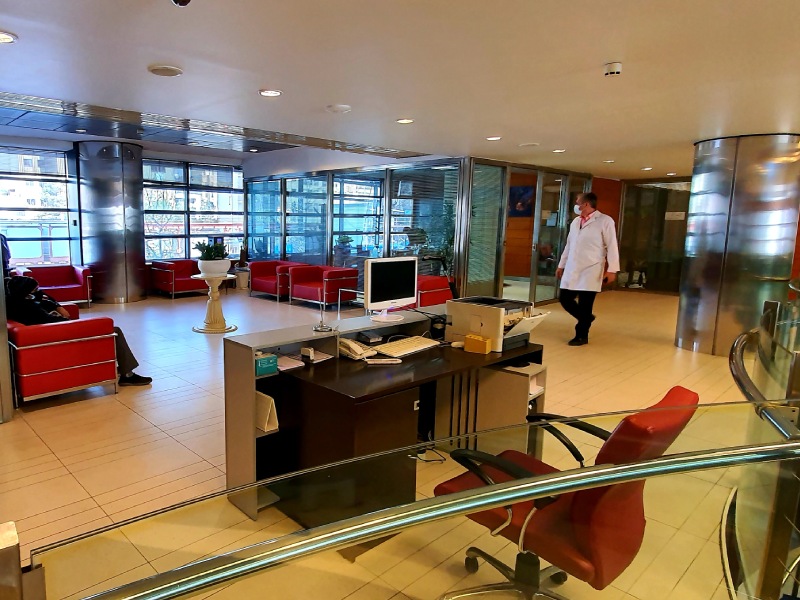
Procedure and Duration of Angiography:
Angiography of the eye takes 10 minutes to one hour depending on the patient’s condition, the physician’s request, and the type of angiography. In this method, fluorescein or ICG dye is injected into the patient’s hand veins, and imaging begins simultaneously with the drug injection. At this stage, retinal vascularization and the choroid are examined thoroughly, and various imaging methods are employed.
Angiography with injection is used with great precision for diagnosing diabetic patients, AMD, inflammatory eye diseases, etc. The collected data is gathered and provided to the specialist ophthalmologist. For many patients, treatment begins after angiography.
Fundus photography is a simple retinal imaging method that does not require further analysis or actions. Typically, this imaging is used to record the patient’s retinal status for subsequent follow-ups (such as glaucoma patients, eye tumors, and various retinal diseases). Types of fundus photography methods include:
Color Fundus Photography
Multi-color Fundus Photography
Fundus Auto Florescence (FAF)
Red Free/IR Fundus Photography
Wide Field Multi-color Fundus Photography
Diagnostic Equipment
Noor Eye Hospital, relying on years of therapeutic experience, is now equipped with the most advanced and efficient diagnostic, therapeutic, and paraclinical equipment, providing the highest quality ophthalmic services to both domestic and international patients.
In this section, you will become familiar with some of the therapeutic services, including the LASIK operating room, intraocular surgery operating room, contact lens clinic, eyewear sales unit, and eyewear laboratory of Noor Eye Hospital.
LASIK Operating Room Equipment
Noor Eye Hospital’s LASIK operating room is equipped with 4 Femto-LASIK devices from the highly reputable Zimmer factory, providing the following practical capabilities:
Z4: Used for creating very precise flaps in LASIK eye surgery.
Z6: In addition to creating precise flaps, it can be used for procedures such as corneal ring placement for treating keratoconus, corneal transplantation, and performing highly regular layer removals.
Visumax ZEISS: Utilized for the SMILE technique, it executes the SMILE procedure with very high quality, ensuring patients experience minimal discomfort and reducing the likelihood of postoperative issues like dry eyes.
Another device used in the LASIK operating room is the EX500, sourced from one of the world’s most reputable companies.
EX500: Manufactured by ALCON – Germany, with a power of 500 Hz.
SCHWIND AMARIS: Manufactured in Germany with a power of 1000 Hz, this device tracks the patient’s eye movement in three primary axes and several secondary axes for higher surgical precision.
MELL 90: Manufactured in Germany, this device works in conjunction with the Visumax device and is known for minimal postoperative side effects and extremely high laser accuracy.
The equipment available in Noor Eye Hospital’s LASIK operating rooms is comparable to that used in the most reputable ophthalmic centers globally, reflecting extensive investment to maintain their state-of-the-art status.
The aim is to ensure that patients receive the highest quality, most stable, and most effective ophthalmic treatments. Noor Eye Hospital is the only ophthalmic center in Iran and the Middle East where all the necessary equipment for LASIK surgeries is available under one roof.
Intraocular Surgery Operating Room Equipment
Since its establishment, Noor Eye Hospital has created the most advanced and comprehensive intraocular surgery department, providing high-quality therapeutic services to its esteemed visitors. Located on the third and fourth floors of the hospital, the intraocular surgery section comprises 9 rooms equipped with the following facilities:
Phaco machines: Manufactured by Alcon, Abbott, and Dorc, used for performing vitrectomies and other intraocular surgeries.
Alcon Infiniti Phaco machine
Alcon Constellation Vitrectomy Phaco machine
Dorc EVA Vitrectomy machine
Abbott SIGNATURE PRO Phaco machine
Retina Laser Equipment
In addition to the mentioned devices, the intraocular surgery department of Noor Eye Hospital possesses state-of-the-art retina lasers, which are used during vitrectomy surgeries.
CPC Machine: The latest and most advanced retina and glaucoma laser used for patients with high intraocular pressure due to glaucoma. This device controls intraocular pressure very precisely using an 810-nanometer laser.
Operating Microscopes
Precise and flawless intraocular surgeries rely not only on the expertise of ophthalmic surgeons but also on highly accurate and efficient operating microscopes. Noor Eye Hospital has acquired a complete set of these devices.
ZEISS LUMERA 700 and S800: These are among the most advanced ceiling-mounted microscopes from the Zeiss factory in Germany, providing excellent visibility for surgeons. They can also record surgical procedures and are used for educational, research, live surgery, and similar purposes.
Hospital Beds
Noor Eye Hospital boasts the most modern and finest surgical beds for eye patients. With these beds, most patients undergoing intraocular surgery, particularly middle-aged and elderly individuals who may experience mobility issues or ailments such as leg pain, neck pain, or back pain, can undergo treatment with greater comfort. Simply put, patients are placed on the surgical bed upon arrival in the intraocular surgery department and go through all stages of treatment, including pre-operation, surgery, and recovery, without needing to be moved again, ultimately being transferred to regular hospital beds at the end.
Technical Features
Fully electric and equipped with a 12-volt battery (eliminating the risk of electric shock or burns due to the absence of direct electricity usage).
Adjustable and controllable in various modes for patient and surgeon convenience.
Weight capacity up to 150 kilograms.
Fully compliant with ergonomic principles.
Monitoring and Anesthesia
This section is responsible for monitoring and supervising patients’ vital signs, including respiration, blood pressure, heart rate, and ECG monitoring, as well as capnography.
Note: According to the latest guidelines, capnography is mandatory for patients under anesthesia for more than 3 hours.
Usually, all patients’ medication needs are met through secure intravenous access, with all sedative and pain-relieving medications administered intravenously. Eye drops are also used for ocular anesthesia. General anesthesia is administered to patients who, for any reason, including children, individuals with Alzheimer’s disease, or those with surgery-related phobias, require it. Additionally, in certain surgical procedures such as strabismus and vitrectomy, if there are no contraindications, general anesthesia is used for the surgery.
Furthermore, all operating rooms in the intraocular surgery department of the hospital are equipped with syringe pumps for medication administration, following the surgical and anesthesia protocols.
Anesthesia Machines
Noor Eye Hospital utilizes the most advanced anesthesia machines from the Dräger factory in Germany, mounted on ceiling columns.
All these devices undergo servicing and calibration every six months due to their high importance and sensitivity, with annual testing and examination. To prevent disruption in the treatment process, portable anesthesia machines are used if fixed anesthesia machines fail to perform adequately.
Recovery
The recovery section provides all patient care facilities and is equipped with EKG monitoring devices and defibrillators on every floor. Any cardiac changes are examined by a consulting cardiologist and anesthesiologist, and if additional patient care is required, support is sought from the hospital.
CSSD Section
For the past two years, Noor Eye Hospital has adopted the most comprehensive medical sterilization system. This unit is equipped with two 270-liter autoclaves from the Miele factory in Germany, which are regularly monitored according to available guidelines to ensure patient treatment safety and quality. Additionally, Noor Hospital was the first ophthalmic center to use a plasma device for sterilizing heat-sensitive and expensive equipment and instruments. This device, supplied by Johnson & Johnson, undergoes monitoring, calibration, and servicing every six months to ensure its performance.
Supply of Consumables
Noor Eye Hospital ensures the provision of all consumables, including lenses required by patients, based on surgeons’ diagnoses. This task is carried out meticulously to provide patients with comfort and prevent them from wandering around the city for supplies, thereby avoiding associated problems.
Introduction to the Laboratory
The clinical laboratory of Noor Hospital, in line with other specialized departments of the hospital, is equipped with the latest laboratory devices and technologies. In addition to providing all specialized laboratory services for eye diseases, it is capable of accepting and providing results for all necessary tests for patients in other specialized and super-specialized fields, the list of which is accessible on this website.
In this laboratory, the use of automated systems such as the random access biochemistry autoanalyzer, automated cell counters specific to hematology, coagulometer, sodium analyzer, and other automatic analyzers has minimized human intervention and consequently reduced associated errors to a minimum. Hormonal, immunologic, virologic, and genetic tests are also performed using quantitative luminance, ELISA, and PCR systems. These systems are calibrated and continuously monitored by products from Roche, Switzerland.
The use of rapid automated systems in this laboratory enables the provision of results for all routine patient tests in less than an hour from the time of sampling. Patient admission hours are from 7 am to 7 pm, and sampling is performed without the use of syringes, utilizing an automatic sampling system with a vacuum interface (vacutainer). This not only reduces pain and tissue damage but also ensures ease and speed in the sampling process, increasing accuracy and reliability in result reporting.
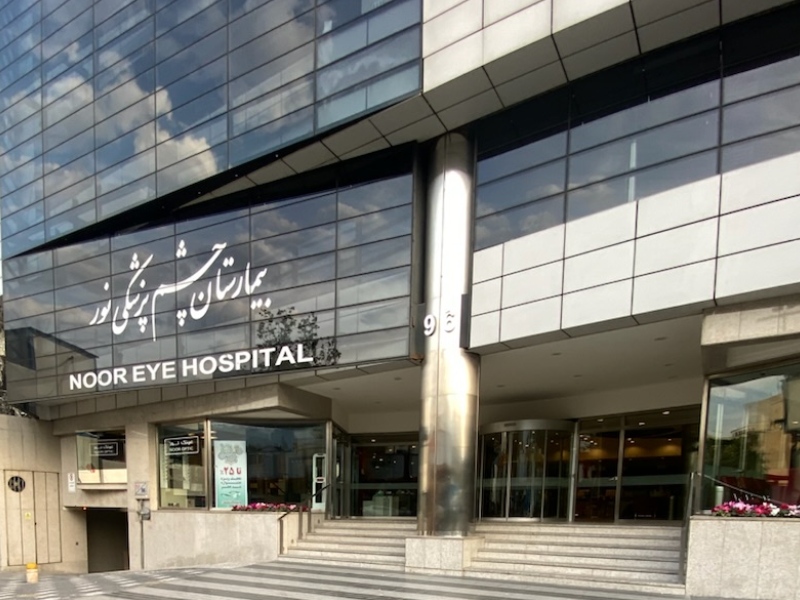
Eyeglass Fitting
In addition to the common original brands available in the market, Noor Hospital’s eyeglass fitting department offers its exclusive brands, including Bugatti from France, Leonardo from Italy, Lindberg from Denmark, and Zeiss from Germany, among others, to its esteemed visitors.
Noor Hospital’s Eyeglass Laboratory
It can confidently be claimed that the most equipped eyeglass laboratory in the country belongs to Noor Hospital. The EZ.FIT trimming device from Italy, the most advanced device in the Middle East purchased by Noor Hospital, is capable of trimming and designing lenses in various shapes. After scanning the frame and presenting the coordinates of the eyeglass prescription, all trimming, drilling, grooving, and other processes are completed within 57 seconds on this device. High-quality branded lenses with refractive indices of 1.5, 1.6, and 1.67 are available in bulk at the eyeglass laboratory. Therefore, after selecting and purchasing the eyeglass frame and presenting the prescription, if the lenses are available in the laboratory, the individual is guided inside, and ultimately, after 10 minutes, the glasses are fully delivered to the patient.
Introduction of Some Recommended Lenses
Exclusive Single Vision Lenses (Indivisual): Optimized field of view based on physiological features of the face.
Progressive and Bifocal Lenses: Individuals often have concerns about the high price of these lenses and their compatibility issues. However, our colleagues provide fitting and guarantee proper vision with the correct selection of progressive lenses and fitting them onto the face using RVT devices available in the store, if necessary.
Business, Office, and Digital Lenses: Advanced reading lenses for individuals who need continuous work at distances from near to 1 to 2 meters. Recommendations are made based on the individual’s occupation and type of work by our colleagues. For instance, working with computers, various surgeries, tailoring, etc.
Active and Digital Lenses: Individuals who use digital devices extensively (aged 25 to 40) often experience dryness and eye fatigue after a few hours of use. Our colleagues recommend active and digital lenses for these individuals to provide a more comfortable vision experience, especially for young people with an active lifestyle.
Special Lenses for Drivers: Individuals who drive extensively or have a driving profession are recommended special lenses tailored to this option (based on the relevant prescription and age), which makes driving much safer and more comfortable than before and is also suitable for use in all other daily activities.
Additional details on all the above cases can be obtained from the consultants stationed at Noor Hospital’s eyeglass fitting department.
Provision of Specialized Custom Lenses Using the Latest Fitting Technology and Imaging Localization
Indeed, Noor Hospital’s eyeglass fitting department, with two RVT devices for measuring and designing advanced lenses among leading optical colleagues, is at the forefront. For stable and comfortable vision, especially when using modern tools such as tablets and smartphones, easy adaptation and extraordinary depth of view, clear and sharp vision in all directions, individuals can visit our optical specialists at the eyeglass fitting department, present their eyeglass prescription, and our colleagues will recommend the best and newest lenses suitable for the prescription. As a result, by selecting the best lenses tailored to all their needs, individuals will experience life with true vision.
Individuals usually face doubts and difficulties in choosing glasses and seek help from others to choose a more beautiful and better-fitting pair for their face. The RVT device available in the eyeglass fitting department allows for taking photos and videos of glasses on the person’s face. In this way, 4 photos or 4 videos taken of the individual are simultaneously displayed, and the person makes the best frame selection.
Maintenance and Protection of Eyeglasses
Proper use and careful maintenance of lenses not only extend their lifespan but also provide optimal optical quality for the individual. Lenses should be washed with cold water and, at most, a small amount of liquid soap, then dried with soft clean (microfiber) cloths. Lenses should not be wiped with paper towels as they can scratch the lens surface. Store your glasses in a hard, appropriately sized case so that the lenses do not come into contact with any surface. Never place your glasses near heat sources (heaters, radiators, etc.). When entering the sauna, remove your glasses from your eyes, and avoid leaving them inside the car (especially on the dashboard) on hot summer days. To prevent the settings of the glasses from being disturbed, always put them on and take them off with both hands.
Pharmacy
The pharmacy of Noor Ophthalmology Hospital serves as an information center for pharmaceuticals and supplies all ophthalmic medications and consumable medical items. Through communication with all importers and distributors of these items, it is capable of providing the latest scientific information, inventory, and prices of the required goods for visitors and esteemed patients. Procurement and delivery of medical consumables and pharmaceutical needs of patients are among the other services provided by this pharmaceutical center.
Hospital Amenities
Since its inception, Noor Specialized Ophthalmology Hospital has prioritized respect for patients and visitors in its activities, offering numerous facilities and amenities to serve them. Below are the details:
Supply of Patient Consumables:
Common consumables (such as lenses needed for patients undergoing cataract surgery) are provided based on surgeons’ diagnoses. This is done with meticulous care, ensuring patient comfort and preventing them from wandering around the city to procure supplies.
Pharmacy:
The hospital pharmacy stocks all prescribed medications, especially those commonly used post-surgery, as well as eye care items (including shampoos, eye wash solutions, artificial tears, various supplements, etc.). This enables patients and visitors to obtain their pharmaceutical and health needs without the need for multiple trips within the city.
Eyewear Unit:
This unit offers a wide range of prescription and sunglasses for both children and adults, with a variety of frames available. Services include eyewear manufacturing and fitting using state-of-the-art production and measurement tools, as well as customization.
Companion Rest Area:
Companions of patients undergoing surgery can rest in a tranquil space until the patient is discharged. They can enjoy hospitality and amenities such as an exclusive café, library, television, and internet access.
Prayer Room:
Separate prayer rooms for men and women are located on the basement floor.
Café Shop:
To enhance the comfort of esteemed visitors, Noor Café Shop offers a diverse menu of hot and cold beverages and snacks.
Agency Services:
To facilitate the well-being of visitors, prevent common delays in finding taxis and ride-hailing services, our colleagues at the hospital’s agency are ready to serve the esteemed patients and their companions.
Stands and Environmental Displays:
Large displays and stands containing brochures have been installed on all floors of the hospital to inform visitors about the various services provided by the specialized ophthalmology clinic and to introduce specialized and subspecialized physicians and provide information about eye diseases.
Safety and Security:
All floors of Noor Ophthalmology Hospital are equipped with emergency exits, escape stairs, CCTV surveillance systems, fire alarm and extinguishing system, and building management system to ensure the well-being, comfort, and safety of patients and esteemed visitors according to existing standards.
Payment Terminals:
To reduce unnecessary movement and provide convenience to esteemed visitors on all floors of the specialized ophthalmology clinic and the necessary floors of the hospital, payment terminals have been installed. Patients can make their payments without unnecessary displacement and be discharged as quickly as possible after undergoing various surgeries.
Insurance Coverage:
Noor Specialized Ophthalmology Hospital has signed contracts and memoranda of understanding with basic insurance holders (including Social Security Organization, Iranians’ Health Insurance) and supplementary insurance companies for the well-being of insurance holders.
Introduction to IPD Services “International Patient Reception”
Noor Advanced Ophthalmology Hospital commenced its activities in 1993 by launching the first private specialized ophthalmology clinic in Tehran, Iran, located on Mottahari Street, and subsequently, opening Noor Super Specialized Eye Hospital on Esfandiar Street was the second step towards achieving the great goal of providing innovative ophthalmology services to valued patients. Presently, with over three decades of continuous operation, this establishment is considered the first private ophthalmology center in Iran, offering the most diverse and up-to-date diagnostic and therapeutic ophthalmology services to patients in the global class.
Noor Hospital, with the presence of ophthalmologists who are well-known in terms of scientific and clinical status, and the operation of modern and advanced equipment, facilities, and operating rooms, has always been admired by the Iranian and global ophthalmology community by providing various treatments and performing the most complex eye surgeries. Indeed, the quality of services provided by this establishment can be compared to the most reputable medical centers worldwide.
Our compassionate and dedicated nurses have undergone special hospital care courses parallel to international standards to provide the best and highest quality services to visitors.
In a word, Noor Ophthalmology Hospital has anticipated all the necessary facilities and measures to provide quality treatment in a beautiful and serene environment, allowing you, dear friend, to experience a pleasant journey and successful treatment.
Some of the Most Important Achievements of Noor Ophthalmology Hospital:
Performing the first refractive surgery using Excimer laser in Iran
Performing the first FemtoLASIK surgery in Iran
Performing the first laser surgery to correct corneal astigmatism
Performing the highest number of refractive error correction surgeries in Iran and the Middle East
Corneal ring implantation for the first time in Iran to correct myopia and keratoconus
Performing the first guided wavefront refractive surgery
Performing the first Femto-astigmatic surgery for refractive error correction
Implanting the first intraocular lenses to correct presbyopia
Performing the first cataract surgery using phacoemulsification
Performing the first cataract surgery using laser
Establishing the first diabetes clinic to monitor eye problems in diabetic patients in the country
Implementing modern corneal graft techniques
Performing the first Femto-cataract surgery in Iran
Special Services for International Patients (IPD) at Noor Eye Hospital
The provision of medical services to foreign patients has been ongoing at Noor Eye Hospital for many years. Currently, in accordance with the directive of the Ministry of Health, Treatment, and Medical Education regarding the organization of foreign patients separately and the allocation of special services to these patients, Noor Eye Hospital has undertaken the following measures:
Establishment of a separate unit within the organizational chart under the supervision of the hospital’s executive management.
Coordination for receiving appropriate treatment from the country of origin (airport-to-airport package).
Provision of suitable physical space for accommodating this group of patients.
Deployment of responsible specialists (proficient in Arabic and English) for the admission process until the discharge of patients.
Up-to-date data registration on the portal of the Treatment Deputy System.
Preparation of a bilingual guidebook, dedicated parking, free shuttle service for patients on the day of surgery, high-speed internet, scheduling of visits and necessary treatments, and delivery of medical documents to foreign patients.
Medical, Clinical, and Paraclinical Services:
Operating Rooms:
Noor Eye Hospital has “LASIK Operating Rooms (Refractive Error Correction)” and “Intraocular Operating Rooms.” Both groups of operating rooms in the hospital, equipped with modern equipment and experienced staff, are ready to serve respected patients. In LASIK operating rooms, surgeries such as PRK, FemtoLASIK, Femto-astigmatic, and UVX eye surgeries are performed. In intraocular operating rooms, specialized eye surgeries including cataract and phaco-cataract surgeries, vitrectomy, glaucoma, blepharoplasty, strabismus, and other eye surgeries are performed.
Specialized Clinics:
The specialized clinics at Noor Eye Hospital include the Corneal Clinic, Uveitis Clinic, Retina Clinic, Lens Clinic, Geriatric Ophthalmology Clinic, Orthoptic Clinic, Lazy Eye Clinic, and Dry Eye Clinic.
Specialized Paraclinical Services:
The specialized paraclinical services at Noor Eye Hospital include the Eye Laser Clinic (Laser Therapy Unit), OCT and Angiography, Pentacam, Perimetry, IOL Master, Corneal Topography, ERG and Electrophysiology, and various eye scans.
Contact Methods with the International Unit of Noor Eye Hospital
Through the hospital’s website at www.noorvision.com
Contact via telephone: +982182401645
Contact via mobile number and WhatsApp: +989120994170
Through in-person appointment booking by visiting the clinic of Noor Eye Hospital and obtaining an examination appointment from the international unit.
Process of Appointment for Refractive Surgeries (PRK, FemtoLASIK, Femto-astigmatic):
Booking appointment through the mentioned methods above.
Patient reception by the IPD specialist.
Visiting the cashier and payment of fees.
Performing optometry and preoperative paraclinical tests.
Examination by an ophthalmologist and receiving surgery instructions.
Following the surgery, patients are accompanied by a hospital translator for pharmacy visits and medication instructions translation. The translator also reminds patients of follow-up appointments.
Process of Appointment for Intraocular Surgeries (such as cataract surgery):
Booking appointment through the mentioned methods above.
Patient reception by the IPD specialist.
Payment of fees at the cashier.
Performing optometry and preoperative paraclinical tests.
Examination by an ophthalmologist and receiving surgery instructions.
Blood tests and cardiac consultation before the surgery.
Accompaniment by a translator for blood tests and cardiac consultation.
Following the surgery, patients are accompanied by a translator for pharmacy visits and medication instructions translation. The translator also reminds patients of follow-up appointments.
Process of Appointment for Intraocular Injections (e.g., Avastin and Ozurdex) for Diabetic Patients:
If during examinations it’s determined that a patient needs intraocular injections or eye laser treatment, an appointment is scheduled accordingly.
On the day of treatment, the patient is accompanied by a hospital translator.
At this stage, the translator translates the ophthalmologist’s instructions, and other matters are also followed up to ensure clarity for the patient.
Importantly, communication with the translator continues even after the patient returns to their home country to relay any questions or eye-related issues to the treating ophthalmologist.
Other Centers of Noor
Since the establishment of Noor Ophthalmology Clinic in 1993 until today, when two hospitals and three clinics have been founded in Iran (Tehran, Karaj, Fardis, and Ray), and a polyclinic in Oman (Muscat), the policy of the Noor Ophthalmology Group has been to provide the best services to its patients and customers in a pleasant and tranquil environment, utilizing the knowledge and experience of skilled ophthalmologists, experienced staff, and advanced equipment.
In this regard, although each branch of the Noor group is managed independently under its own board of directors and CEO, they all operate under the banner of the Noor Ophthalmology Group and strive to provide consistent services with the highest quality standards. In other words, all staff members of this large institution endeavor to create conditions where each individual, from the moment of entering any of the Noor branches until receiving services, achieves the highest level of satisfaction. In this path, by employing competent forces, continuous training, research, and relentless efforts, we hope the Noor brand will continue to shine in the field of ophthalmic and medical services in Iran and the region.
Noor Eye Hospital
Noor Alborz Eye Hospital
Noor Subspecialty Clinic in Motehari
Noor Subspecialty Clinic in Fardis
Noor Subspecialty Clinic in Ray
Noor Iranian Polyclinic (Oman – Muscat)
Noor Eye Hospital
Phone: 02182400
Address: Tehran, Valiasr (Agha) Street, Above Zafar, Beginning of Esfandiar Boulevard, No. 96 and No. 82

